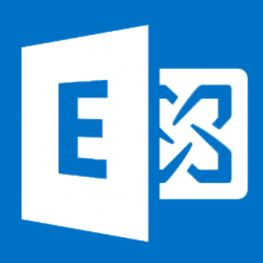INSTRUCTORS:
Da definire
Consulenti ed esperti del settoreAddress
Torino - Corso Unione Sovietica 612/15/C View mapCategories
Corsi Aziendali e su Misura , Diurna , Elea Informatica , In Aula , Microsoft , Torino - Corso TrapaniDESCRIZIONE:
Questo corso fornisce le conoscenze e le competenze per poter configurare e gestire un ambiente di messaggistica basato su Microsoft Exchange Server 2013. Il corso fornisce best practices, guidelines, e considerazioni che aiutano ad ottimizzare il deployment di Exchange Server.
OBIETTIVI:
Al termine del corso gli allievi saranno in grado di:
- progettare e implementare Exchange Server 2013 Unified Messaging;
- progettare e implementare una strategia di virtualizzazione;
- progettare e implementare la sicurezza;
- progettare e implementare la compliance dei messaggi;
- utilizzare la Powershell per gestire Exchange Server 2013;
- progettare e implementare l’integrazione con Exchange Online;
- progettare e implementare la migrazione da sistemi di messaggistica diversi da Exchange e l’upgrade da precedenti versioni di Exchange.
PROGRAMMA:
Designing and Implementing Site Resilience
- Site Resilience and High Availability in Exchange Server 2013
- Planning a Site Resilient Implementation
- Implementing Site Resilience
Planning Virtualization for Microsoft Exchange Server 2013
- Planning a Hyper-V Deployment to Exchange Server 2013
- Virtualizing Exchange Server 2013 Server Roles
Overview of Exchange Server 2013 Unified Messaging
- Overview of Telephony Technologies
- Unified Messaging in Exchange Server 2013
- Unified Messaging Components
Designing and Implementing Exchange Server 2013 Unified Messaging
- Designing a Unified Messaging Deployment
- Deploying and Configuring Unified Messaging Components
- Designing and Implementing Exchange Server 2013 UM Integration with Lync Server 2013
Designing and Implementing Message Transport Security
- Overview of Messaging Policy and Compliance Requirements
- Designing and Implementing Transport Compliance
- Designing and Implementing Active Directory Rights Management Services (AD RMS) Integration with Exchange Server 2013
Designing and Implementing Message Retention
- Overview of Messaging Records Management and Archiving
- Designing In-Place Archiving
- Designing and Implementing Message Retention
Designing and Implementing Messaging Compliance
- Designing and Implementing Data Loss Prevention
- Designing and Implementing In-Place Hold
- Designing and Implementing In-Place eDiscovery
Designing and Implementing Administrative Security and Auditing
- Designing and Implementing Role-Based Access Control (RBAC)
- Designing and Implementing Split Permissions
- Planning and Implementing Audit Logging
Managing Exchange Server 2013 with Exchange Management Shell
- Overview of Windows PowerShell 3.0
- Managing Exchange Server Recipients by Using the Exchange Management Shell
- Using Windows PowerShell to Manage Exchange Server
Designing and Implementing Integration with Microsoft Exchange Online
- Planning for Exchange Online
- Planning and Implementing the Migration to Exchange Online
- Planning to Coexist with Exchange Online
Designing and Implementing Messaging Coexistence
- Designing and Implementing Federation
- Designing Coexistence Between Exchange Server Organizations
- Designing and Implementing Cross-Forest Mailbox Moves
Designing and Implementing Exchange Server Upgrades
- Planning the Upgrade from Previous Exchange Server Versions
- Implementing the Upgrade from Previous Exchange Versions
ESERCITAZIONI E SUPERAMENTO:
All’interno di ogni modulo vi sono dei momenti di autovalutazione non vincolati che consentono all’utente di interagire con l’animazione verificando l’apprendimento dei concetti presentati. Il corso viene considerato concluso una volta fruiti tutti i contenuti.
DESTINATARI:
Il corso si rivolge a amministratori di ambienti di messaggistica.
PREREQUISITI:
Per partecipare con profitto a questo corso è necessario che gli allievi siano in possesso dei seguenti prerequisiti:
- aver frequentato il corso MOC 20341 – Core Solutions of Microsoft Exchange Server 2013 oppure possedere competenze equivalenti;
- almeno 6 mesi di esperienza lavorativa con Exchange Server 2010 o successivi;
- esperienza nella amministrazione di Windows Server 2008 R2 o successivi;
- esperienza nella amministrazione di Active Directory, DNS, certificati;
- esperienza con l’utilizzo della Windows Powershell.
ATTESTATO:
Attestato di frequenza
Per le edizioni schedulate nei mesi successivi contattare la sede di competenza>
Il corso può essere erogato anche in modalità “ONE to ONE”.
Il corso è erogabile su altre sedi su richiesta.
Il costo del corso è finanziabile con i Fondi Interprofessionali.


